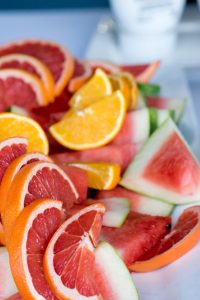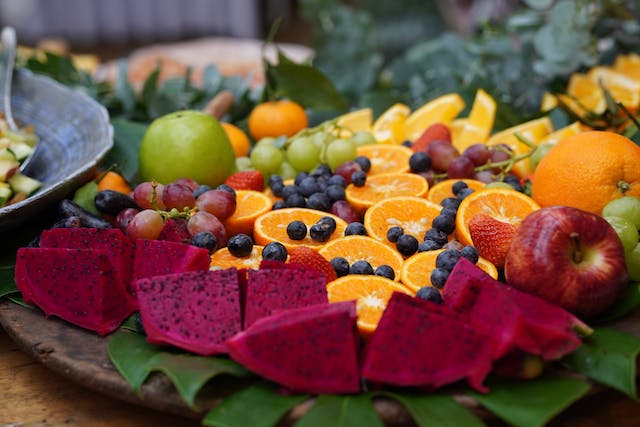Introduction: Meet our expert author, David, a seasoned nutritionist with over 15 years of experience in the field. With a strong background in diabetes management, he’s here to shed light on the complex interplay between diabetes and fruit consumption. In this article, we will delve into the delicate balance of sweet and sour fruits and
Introduction:
Meet our expert author, David, a seasoned nutritionist with over 15 years of experience in the field. With a strong background in diabetes management, he’s here to shed light on the complex interplay between diabetes and fruit consumption. In this article, we will delve into the delicate balance of sweet and sour fruits and how they affect blood sugar levels. Diabetes is a chronic condition that affects how your body processes glucose, the primary source of energy. It’s essential to manage your blood sugar levels, as fluctuating levels can have detrimental effects on your overall health. One key aspect of diabetes management is your diet, and here’s where fruit consumption comes into play. Fruits are packed with essential vitamins, minerals, and fiber, making them a vital part of a balanced diet. However, not all fruits are created equal when it comes to diabetes management. Some fruits have a higher sugar content and a higher glycemic index, which can lead to rapid spikes in blood sugar levels.
Fruits and Glycemic Impact
High-sugar fruits, often the sweetest and most tempting, can pose a challenge for individuals with diabetes. These fruits tend to have a high glycemic index, meaning they can cause a quick and significant increase in blood sugar. For example, fruits like watermelon, ripe bananas, and pineapple are delicious but can lead to blood sugar spikes when consumed in excess. However, this doesn’t mean you need to eliminate high-sugar fruits from your diet entirely. They can still be enjoyed, but in moderation and with a few precautions. If you’re craving that juicy slice of watermelon, try having it in small portions and balancing it with lower-glycemic fruits.

Photo by Scott Webb: https://www.pexels.com/photo/close-up-photography-of-sliced-fruits-1022926/
Fruits for Diabetes
Low-glycemic fruits are a more diabetes-friendly choice. They have a slower impact on blood sugar, providing steady energy without causing rapid spikes and crashes. Examples of low-glycemic fruits include berries, cherries, and apples. These fruits are not only less likely to lead to blood sugar spikes but also offer other health benefits. Berries, for instance, are rich in antioxidants and fiber, making them an excellent choice for diabetes management. The fiber content helps slow down the absorption of sugars, further stabilizing blood sugar levels.
Blood Sugar with Fruits
Portion Control: Pay attention to portion sizes. While you may want to indulge in that entire bunch of grapes, it’s better to consume them in measured amounts to avoid rapid blood sugar spikes.
Pairing: Combine high-sugar fruits with low-glycemic fruits or other foods that are rich in protein and fiber. This slows down the absorption of sugars and helps maintain steady blood sugar levels.
Timing: Consider when you consume high-sugar fruits. Eating them before physical activity can help your body use the sugar for energy, reducing the impact on blood sugar.
Regular Monitoring: Keep a close eye on your blood sugar levels, especially after consuming fruits. This will help you understand how different fruits affect your body and make more informed choices.

Photo by Tom Tran: https://www.pexels.com/photo/sliced-fruits-on-the-plate-11704884/
Portion Control
Proper portion control is a crucial aspect of diabetes management. Even low-glycemic fruits can affect blood sugar levels if consumed in excessive amounts. To provide a clear understanding, here are recommended portion sizes for some common fruits:
Planning for Diabetics
Balanced Plate: Aim to fill half your plate with non-starchy vegetables, one-quarter with lean protein (such as chicken or tofu), and one-quarter with whole grains or starchy vegetables.
Fruit Inclusion: Plan your fruit intake based on your preferences and blood sugar response. Some people find it helpful to have fruits as snacks, while others prefer them as part of their main meals.
Snacking Smart: If you enjoy snacking on fruits, try combining them with a source of protein or healthy fats. For example, a small apple with a handful of almonds can be a satisfying and blood sugar-friendly snack.
Table: Sweet vs. Sour Fruits
| Aspect | Sweet Fruits | Sour Fruits |
|---|---|---|
| Sugar Content | High | Low |
| Glycemic Index | High | Low |
| Suitable for Diabetics | Limited consumption; monitor blood sugar | Generally safe for most diabetics |
| Best Time to Consume | Pre-workout for quick energy, sparingly | as snacks or meal accompaniments |
Conclusion:
managing diabetes doesn’t mean you have to give up the pleasures of fruit entirely. By understanding the glycemic impact of different fruits and following the provided tips, you can effectively balance your blood sugar levels while enjoying the natural sweetness of fruits. has gone beyond basic information, offering practical advice, recipes, and meal planning strategies, making it a valuable resource for those looking to take control of their diabetes through dietary choices. By prioritizing human-centric formatting and providing engaging and informative content, this article aims to empower readers to make healthier choices in managing their diabetes with the right fruits. Remember, it’s not about giving up the sweet, but about finding the right balance for a healthier life.

















Leave a Comment
Your email address will not be published. Required fields are marked with *